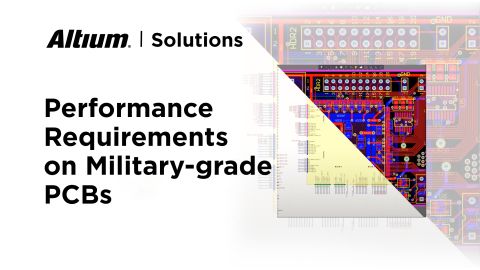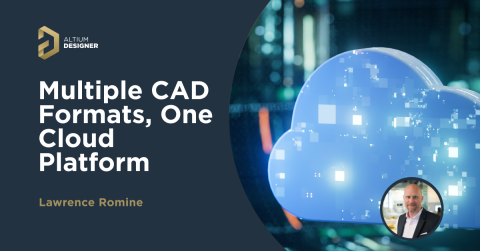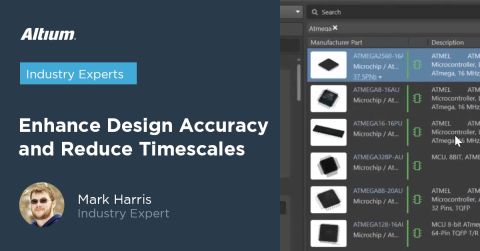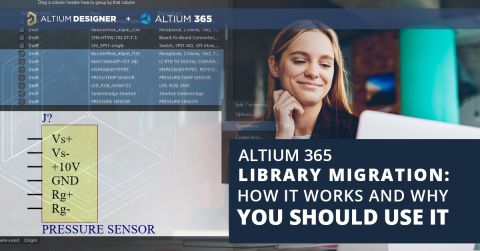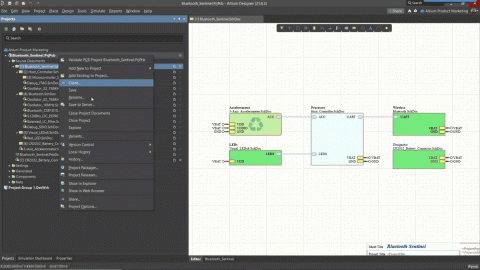Product Lifecycle Management in Electronics Manufacturing

Overview
An effective consumer electronics PLM or product lifecycle management solution will integrate the tools and processes employed to design, develop and manufacture a new device. This solution goes beyond engineering activities to include project management, process control, and financial management of the end-to-end business processes.
In the electronics industry, collaborative working across multi-disciplinary teams is essential for successful electronics product development. Expertise from electronics design specialists requires support from the mechanical and electrical capability to create functionally great products. In contrast, financial and marketing expertise is needed to ensure the product is successful.
Manufacturing PLM solutions create this collaborative environment where consumer electronics PLM development can flourish, bringing additional benefits in efficiencies and transparent communications, breaking silos, and speeding up the development process. In addition, this working environment encourages information sharing that leads to the early identification and resolution of pain points, spotting and mitigating program risks before they can materialize.
Electronics Manufacturing Lifecycle
Product Innovation
In the electronics industry, the majority of new products are an enhancement of an existing product. Typically new models are developed to be faster, smaller, lighter, or include additional functionality. However, occasionally an innovative, original concept will be conceived to address a gap in the market or to exploit a new technology or material that has become available.
To be taken forward, the new product must meet the criteria or be technologically feasible, which is possible to make using available resources financially viable. The financial benefits of creating the product will be greater than the cost of developing and producing it.
Breaking the first point down, if the new product relies on technology that does not exist, then that’s clearly a non-starter. On the other hand, suppose it depends on the technical expertise that the business does not have available, technology in short supply, or overly expensive. In that case, this introduces program risks that may be too great for a business to bear.
Also, there is clearly no point in developing a product that will cost more to manufacture than consumers are willing to spend. The difference between the retail price and the production costs is too small to recoup the costs incurred designing, developing, and marketing the product.
The PLM for consumer electronics solution will manage the collation of inputs from the various stakeholders, disseminate this data around the group and manage the data to ensure its availability and integrity. The key to this is data management to ensure that everyone has access to the most up-to-date version, so decisions are made from a common understanding, a single source of truth.
Product Design
The design phase is relatively straightforward. It covers the various engineering activities necessary to transform a concept into a practical solution. Electronic engineers design the circuitry while mechanical engineers design the enclosure. Other specialists provide design inputs for everything from user interface design and thermal management to electromagnetic compatibility.
The manufacturing PLM solutions will manage the dissemination of product requirements and the collation and integration of design decisions into a single repository representing the electronics product development.
Electronic Computer-Aided Design
Electronic Computer-Aided Design (ECAD) systems support the design and analysis of the electronic elements of the product. The availability of online libraries of component data and integration of circuit simulation functionality make the verification of design decisions fast and accurate. The systems can then take the completed design and aid the designer in producing a PCB layout significantly quicker than the traditional manual processes. Visual representations of the completed layout can also be created to provide component placing information for enclosure clearance verification, and thermal analysis and to support electronics manufacturing processes. Feedback from these supporting engineering activities can be integrated back into the circuit design process to adjust, refine or redesign elements after identifying conflicts or issues.
Mechanical Computer-Aided Design
Mechanical Computer-Aided Design (MCAD) systems support the design and analysis of the mechanical elements of the product. The availability of 3D visual representations of proposed plans makes the verification of design decisions quick and straightforward. The systems can then take the completed design and aid the designer in producing manufacturing templates and specifications. Integration with the ECAD system will provide a fast cross-check of dependencies such as the physical clearances between components and parts or the available airflow volumes and rates for thermal management. The integration of feedback from these supporting engineering activities into the enclosure design process can adjust, refine or redesign parts after identifying potential problems.
Computer-Aided Engineering
Computer-Aided Engineering (CAE) systems support the simulation and analysis of the overall product design to validate the completed and integrated solution. Techniques such as Computational Fluid Dynamics (CFD) and Finite Element Analysis (FEA) allow modeling performance in an operating environment to validate compliance with environmental requirements such as thermal performance or resistance to shocks and vibrations. The results can be fed back into the electronic and mechanical design processes as an iterative refinement until the predicted achievement of compliance.
Computer-Aided Manufacture
Computer-Aided Manufacture (CAM) systems can then take the finalized and validated design information to manage and control automated electronics manufacturing processes. PCB manufacture, component placement, mechanical parts manufacture, and assembly. An integrated PLM for consumer electronics solution can automatically link design processes to manufacturing facilities, eliminating the risk of error during the transfer of design data to production processes.
PLM Manufacturing
We have seen that PLM manufacturing solutions facilitate the automated transfer of the design dataset to electronics manufacturing facilities to manage the engineering aspects of the production process. The PLM solution will also support the management functions that control production. Marketing processes will feed in the requirements for production rates and delivery schedules to meet predicted demand. The design processes will generate bills of materials that, in combination with production rate data, feed into the supply chain management and procurement processes to ensure that sourced components are available when required by the electronics manufacturing processes. The supply chain management processes will also drive the distribution processes, managing transportation, and warehousing of finished products.
The benefit of an integrated PLM for manufacturing solutions is the management of exceptions. The unavailability of a component will be immediately communicated to all stakeholders, highlighting any impact on production schedules. This forward-looking capability allows alternative components sourcing for long-term unavailability or adjustment of production schedules for short-term supply issues.
Taking this to an extreme, the long-term unavailability of a critical component without a suitable replacement would have traditionally brought production to a halt and the premature ending of the product’s lifecycle. The PLM solution allows a change to the circuit design to find an alternative solution to be seamlessly introduced as a controlled change that feeds through the engineering processes and updates the manufacturing dataset. Such a change can be designed, verified, and incorporated into the electronics manufacturing process in days rather than months.
The integrated solution informs the engineering processes and delivers vital information to the support functions. Changes to the bills of materials feed into the procurement processes to assess costs and lead times. Revised component costs feed into the commercial operations for evaluating product pricing and the financial viability of the change. Revised lead times feed into the project management processes and the production and supply chain processes. This flow of information allows assessment of the impact of change and supports informed decision-making across the business processes.
Distribution
The integrated PLM for manufacturing solution will allow the marketing team to see what products have been produced and where. In addition, the integration of supply chain distribution with sales processes can optimize marketing efforts. For example, they can guide where promotional events can have their most significant impact and highlight potential out-of-stock issues that can be resolved before impacting the business.
The marketing strategy will have been developed well in advance thanks to the transparent visibility that the marketing processes will have to progress in the engineering processes. The management of setbacks in product production due to delays in the design process can occur before the design team is aware that the lag will impact. This joined-up approach to product information dissemination streamlines processes and provides stakeholders with a significantly longer horizon for planning purposes using more accurate forecast data.
Support
Once a product is in production and available in the market, the engineering processes move into an ongoing support posture. For example, consumer feedback and fault reporting can be fed into the PLM processes to be collated and analyzed to determine if any design issues need to be resolved for the current product or form a lesson learned in the electronics product development. The integrated processes ensure that such valuable information is available to the right people to improve continuously.
The PLM solution will also facilitate in-service product support and maintenance processes by ensuring access to the required information to manage immediate requests and undertake trend analysis to prepare for predicted support demand. It enables the identification and pre-empting of issues before widespread occurrence and can deliver significant through-life cost savings. Introducing product improvements during production is significantly cheaper than recalling and replacing products with an inherent design fault.
End of Life
All products have an end of life when a new, better model replaces them or the marketplace demand falls to an uneconomic level. While recycling and repurposing old products are gaining momentum across all industries, electronic devices have led to recycling regulations and sustainability initiatives. An integrated BLM solution provides valuable support in identifying parts and materials that can be recycled, reused, or repurposed and managing the disposal process for waste materials that cannot be reprocessed. This capability has the potential to reduce through-life costs where disposal without recycling can be a costly option.
Conclusion
An integrated product lifecycle management solution can deliver significant benefits for the electronics manufacturing industry. Supporting the integration of engineering processes with the other supporting business processes provides an end-to-end system that can manage all aspects of the electronic product lifestyle risk management platform development process from the cradle to the grave. The key benefit is the ability to manage a change of any kind seamlessly and painlessly, ensuring the impact is managed and controlled efficiently and effectively to minimize disruption and maximize the effect.
Would you like to find out more about how Altium Designer® can help you with your next PCB design? Talk to an expert at Altium.
